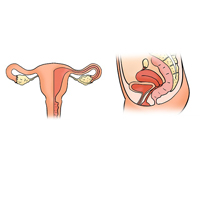Urinary symptoms and urodynamic findings before and after vaginal surgery for pelvic organ prolapse

All claims expressed in this article are solely those of the authors and do not necessarily represent those of their affiliated organizations, or those of the publisher, the editors and the reviewers. Any product that may be evaluated in this article or claim that may be made by its manufacturer is not guaranteed or endorsed by the publisher.
Authors
To ascertain the difference in urodynamic findings, specifically bladder sensation, and urinary symptoms after vaginal surgery for Pelvic Organ Prolapse (POP). Retrospective data analysis of 126 women who underwent vaginal surgery for POP without simultaneous anti-incontinence procedure from January 2013 to April 2019 at Siriraj Hospital, Thailand. Baseline characteristics, intraoperative details and pre and post-operative urinary symptoms and urodynamic findings were recorded. There was no significant difference in the pre and post-operative first desire to void, at 158±53 mL and 162±64 mL, respectively (p=0.518). Incidence of increased bladder sensation was also unchanged, from 46.0% to 46.8% (p=1.00). Post-operative urodynamic stress incontinence was significantly increased, from 15.9% to 31.0% (p=0.003), as was the incidence of weak bladder contractility index (<100), from 47.3% to 61.8% (p=0.005). Significant improvements in post-operative urge urinary incontinence, urgency and voiding dysfunction were noted, from 50.8% to 31.7% (p=0.001), 63.5% to 38.9% (p<0.001) and 42.9% to 5.6% (p<0.001), respectively. No significant difference in bladder sensation after vaginal surgery for POP repair was noted. However, urinary symptoms significantly improved after surgery.
How to Cite
PAGEPress has chosen to apply the Creative Commons Attribution NonCommercial 4.0 International License (CC BY-NC 4.0) to all manuscripts to be published.






